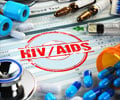The United States on Tuesday unveiled a five-year strategy for fighting AIDS worldwide, shifting the focus from emergency response to sustainable programs in countries worldwide.
The United States on Tuesday unveiled a five-year strategy for fighting AIDS worldwide, shifting the focus from emergency response to sustainable programs in countries worldwide.
Marking World AIDS day, the administration of President Barack Obama outlined the next phase of the widely-hailed President's Emergency Plan for AIDS Relief (PEPFAR), which was launched in 2003 under then president George W. Bush."We're going to begin transitioning from an emergency response to a sustainable one through greater engagement with and capacity-building of governments," said Ambassador Eric Goosby, the US global AIDS coordinator.
Goosby told reporters that the administration hopes, for example, to encourage a country's health, education and finance ministries to take over management of the program and eventually increase funding of it.
"The country needs to manage these programs. The population that these programs are serving are in and of the country," Goosby said.
He also said that the administration will next focus on prevention.
Advertisement
"With treatment, we will continue a strategic scale-up of services to more than four million people," he said.
Advertisement
Under PEPFAR, the US government has pledged about 25 billion dollars to fight HIV/AIDS worldwide, including contributions it has made to the Global Fund, which was set up in 2002 to fight AIDS, tuberculosis and malaria.
Goosby highlighted the continuing success of the program in more than 30 countries.
"In 2009 alone, PEPFAR has supported life-saving antiretroviral therapy for more than 2.4 million people, essential care to nearly 11 million people, and counselling and testing for nearly 29 million people," Goosby said.
PEPFAR has prevented the "transmission from mother to child for 100,000 babies born to HIV-positive mothers in the past year alone, building upon the nearly 240,000 babies born HIV-free over the past five years," he added.
He said the scale of the problem remains daunting.
"There are an estimated 33 million people living with HIV, 2.7 million new infections occurring annually, approximately two million deaths annually, and for every two people we put on treatment, five more become infected," he said.
During Bush's two terms in office, the United States pumped nearly 19 billion dollars into fighting AIDS in poor countries, saving many people who had been denied therapy that only rich economies could afford.
Source-AFP
SRM














